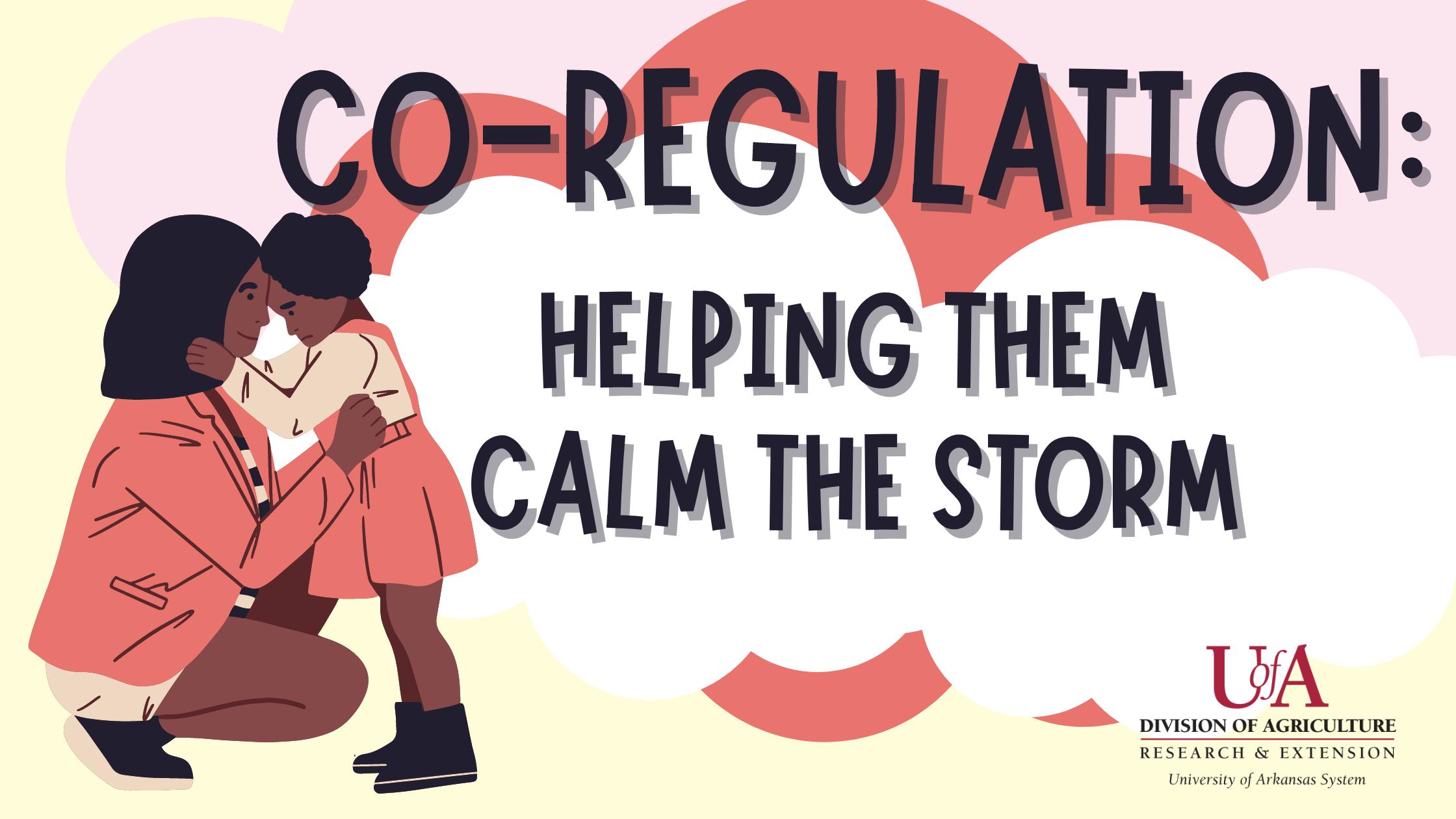Contact
Assistant Professor-Family Life Specialist
Phone: (501) 671-2202
Email: bschrick@uada.edu
University of Arkansas System Division of Agriculture
Cooperative Extension Service
2301 S. University Avenue
Little Rock, AR 72204

Co-Regulation: Helping Them Calm the Storm
If you are a parent or other caregiver you have probably had a moment where you lost your cool. Sometimes, those moments are in response to a child who has lost their cool first. Maybe they are upset that they can't do or have something they want. Maybe they aren't feeling well but refuse to take medicine or do anything but whine about feeling bad. Maybe they are sleepy and kept you up all night so you're sleepy too. There are a lot of things that can cause a child to go off the rails, and sometimes the adults around that child don't respond in healthy ways.
Self-Regulation
Self- regulation is the idea that we can manage our emotions and behavior even in changing situations. Basically, it's whether or not we can act in a way that is appropriate for where we are and who we are around. This is difficult, even for adults, and it is something that people have to learn and practice as they grow and develop. Expecting young children to always be able to "act right" when their brains are still developing is not reasonable. The parts of the brain we need to use to regulate our behavior are some of the last ones to fully develop, and for most people, they have not reached their full potential until early adulthood.
So, how can kids learn to regulate their emotions and behavior when even grown-ups find it difficult sometimes?
Co-Regulation
Co-regulation is a process where we are influenced by the feelings and actions of those around us. That is especially true for kids who haven't learned how to regulate their emotions very well on their own yet and those who might have developmental differences. Adults can support the development of self-regulation in the kids they care for by modeling healthy self-regulation and meeting the child with warmth, responsive attention, structure, and practice.
Warm & Responsive Relationship
Building a warm, responsive relationship with a child begins at birth, but sometimes, the grown-ups in a child's life don't have that opportunity. Whenever you are caring for a child, recognize and respond to their needs and wants in a way that shows that you value and respect them as people. Showing interest in a child's questions, interests, desires, or feelings can set the tone for a positive relationship throughout their life.
Structured Environment
A physically and emotionally safe environment is necessary for a child to flourish. It is the job of the adults in a child's life to act as a safeguard and provide developmentally appropriate opportunities to grow and learn without risking their wellbeing. Consistent routines and reliable expectations help kids feel secure and give them the space to learn to manage their emotions and behaviors in a safe way.
Coaching/Modeling Self-Regulation
Providing a safe environment for children includes giving them room to mess up. This includes offering guidance on how to do things better and build the skills they need through practice.
When a child's emotions are high and their grown-up meets that level with yelling or their own big feelings, the child won't learn to regulate their own fear or anger or frustration, they may learn to fear their grown-up's big feelings instead. So, even if they begin to "act right," it's out of fear of the grown-up's reaction not internal regulation.
How can I teach a child using co-regulation?
When a child comes in with a big emotional reaction, a grown up can help them learn self-regulation by using co-regulation. The grown-up stays calm and helps the child calm down. This can look different in different situations, with different kids, and at different ages. It doesn't mean the grown-up lets an upset child have their way if they are throwing a fit, instead the grown-up is a calm, steady presence for the child.
A grown-up who stays calmly firm in a decision while a child is upset or who holds a child in their lap while they are crying, even when the adult doesn't understand the reason is using co-regulation. Resist the urge to correct their emotional response; instead, talk to them about their behavior.
It is important to remember that a child is a whole, complex person with feelings as big as those of a grown-up but who has fewer tools and less experience to deal with those feelings.
They need you to teach them, and co-regulation is a great way to do that.
For Further Information:
US Department of Health & Human Services, Administration for Children & Families: https://youtu.be/RRMBHQ-Bmk0?si=ENO7NUwLqHFfbLSQ